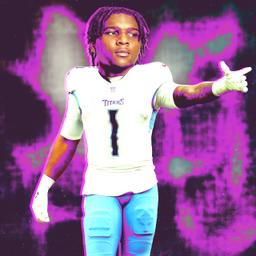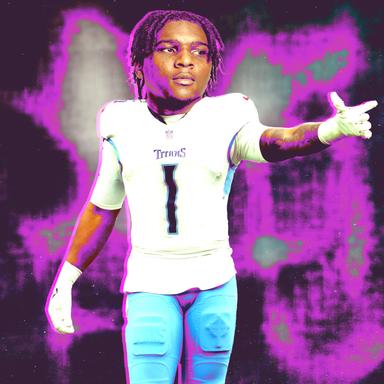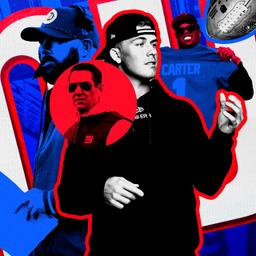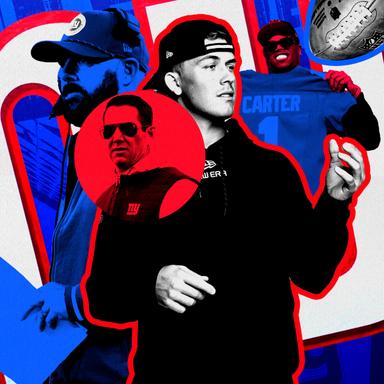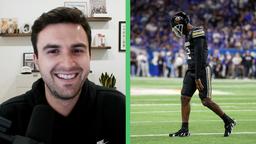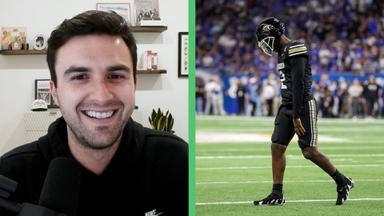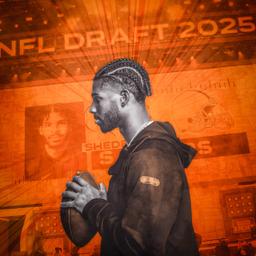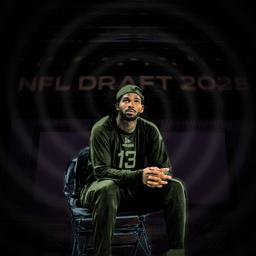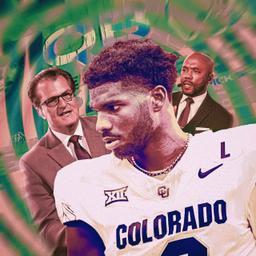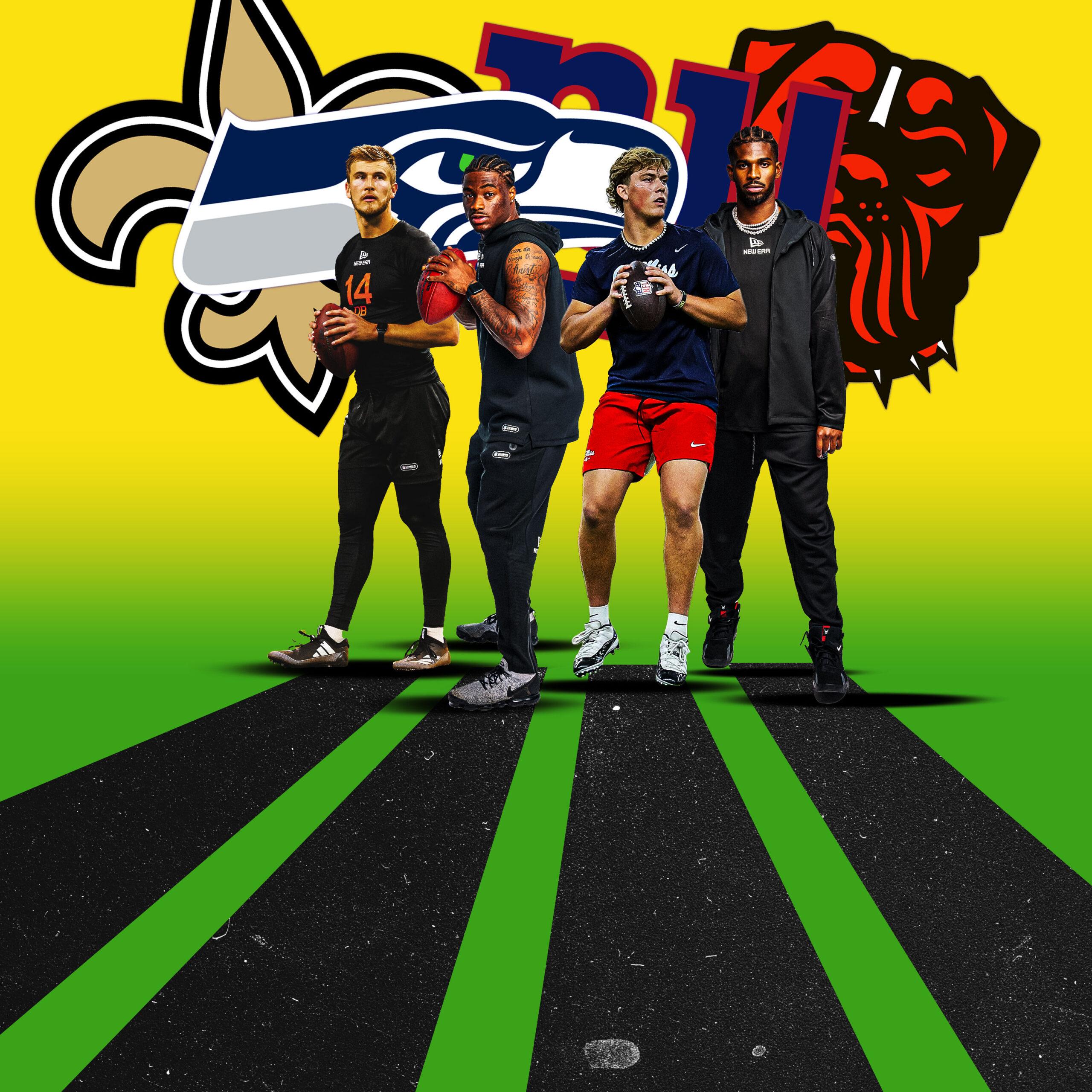
After months of debate, speculation, and nasty anonymous quotes from scouts and executives, the quarterbacks of the 2025 draft class have found their landing spots in the NFL. It’s safe to say that the league wasn’t enamored of this group overall. A year after six quarterbacks were taken within the first 12 picks in the 2024 draft, the sixth quarterback this year wasn’t selected until pick 144, and only two were drafted on the first day. In an age when rookie quarterbacks are routinely thrust into action immediately—eight first-year passers started at least one game last season—this year’s class will face an uphill climb to playing time in 2025. With that in mind, let’s take a look at the first six quarterbacks selected last week and what their respective paths to playing time might be.
Cam Ward, Tennessee Titans (First Pick)
The Titans aren’t ready to declare Cam as their starting quarterback just yet, but the first pick in the 2025 NFL draft has a relatively clear path in front of him. Tennessee general manager Mike Borgonzi has said that incumbent QB Will Levis will compete with Ward for the starting job, but this offseason the team signed two veteran backups, Brandon Allen and Tim Boyle, suggesting that Levis’s spot on the roster may not be secure. Trading Levis could net Tennessee around $1.6 million in cap space after June 1, along with a future mid-round draft pick. So if Levis is functionally just a competitive speed bump along Ward’s road to starting—and based on post-draft comments, that’s how Tennessee’s rookie GM appears to view the third-year quarterback—then the Titans ought to trade him while he still carries some value.
Even if the Titans keep the mayonnaise enthusiast around, though, Ward shouldn’t feel threatened by his presence. Ward is the better quarterback today. The rookie has a big, talented arm attached to a sturdy, athletic frame, and throughout the draft process, he received comparisons to the NFL’s best out-of-structure creators. But Ward’s best play at Miami actually came within the structure of the offense. And the worst facet of his game—his decision-making—emerged when that structure broke down. Ward is a dazzling playmaker on the move, but three of his seven interceptions last season came in the scramble drill, per Pro Football Focus. And if you squint hard enough while watching those plays, you might think they were from Levis’s lowlight reel.
If Ward doesn’t carve out a long, prosperous NFL career, it will be because of those types of plays, not because of any shortcomings as a pocket passer. While there are some accuracy concerns with Ward, who prefers a sidearm pass even when a traditional over-the-top delivery would suffice, he’s an advanced processor (for his age), and he has a natural feel for playing the position. His creativity can be a detriment outside the pocket at times, but it shines inside it. Ward can throw from multiple arm slots, which allows him to shape the trajectory of the ball to beat defenders. He throws with anticipation into tight windows downfield, he slides in the pocket to find better passing angles, and he’s got a big arm that’s capable of firing passes up the seams.
Even if Ward won’t be able to turn Tennessee’s fortunes around all on his own, he should make the team watchable again. But brace yourself, Titans fans: The rookie will certainly make his fair share of rookie mistakes. You’ll probably see some re-creations of those unsightly interceptions I shared earlier as he tests his limits against NFL defenses. And after watching head coach Brian Callahan lose his shit on Levis multiple times last season, I’m most concerned about how the second-year coach will handle those mistakes. If Ward doesn’t start all 17 games for Tennessee this season, it will most likely be because of a Callahan overreaction.
Jaxson Dart, New York Giants (25th Pick)
If things go according to plan for Brian Daboll and Joe Schoen—and the track record isn’t great there—we won’t be seeing Dart during the 2025 regular season. The Giants are cramming the 25th pick into a crowded quarterback room that already features Russell Wilson, Jameis Winston, and Tommy DeVito, so forget about starts; practice reps will be hard to find for Dart. Daboll laid out the early stages of Dart’s development plan after the draft, saying that the rookie will receive third-team reps, with a few surprise first- and second-team opportunities sprinkled in “just to see how he reacts being in a different atmosphere.” The Giants coach also said that Dart “won’t know when or why” those reps are coming. Which, OK. For now, though, the plan is to start Wilson, with Winston serving as his backup.
Daboll didn’t rule out the possibility of a change when the regular season rolls around. New York’s plan for Dart is being modeled after Josh Allen’s development track in Buffalo, which Daboll was a significant part of during his tenure with the Bills. Allen started his rookie season on the bench but didn’t have to wait long to get on the field after Nathan Peterman predictably struggled in the QB1 role. Although Allen was a novice passer (to be generous) in 2018, his running ability made him a viable option even as a rookie. The same could be true for Dart. The 21-year-old has some serious catching up to do after playing in Lane Kiffin’s super spread offense—just adopting an NFL-level snap count could come with a steep learning curve—but he’ll be an asset in the run game from day one.
Like Allen, Dart is a physical runner who will seek out defenders to bowl over in the open field. Ole Miss coaches preached a “plus 2 [yards]” mentality to their players, meaning they should fight for an extra 2 yards whenever they’re getting tackled. Dart seems to have internalized the message—to the point where Kiffin said that they had to coach it out of him to keep him healthy. You can see it all over Dart’s tape at Ole Miss, where he constantly lowered his head to knock over defenders. That will have to change at the next level, where those prospective tacklers will be bigger, faster, and stronger. Sure, Allen gets away with that kind of mentality, but he’s also 3 inches taller and 15 pounds heavier than Dart. Plus, the Bills superstar has dealt with some nagging injuries over the years due to his aggressive style.
If Daboll can coach some of the dog out of Dart, the first-round pick should provide an efficiency boost for the designed run game—but his true value as a runner comes on dropback plays. While Dart was certainly productive in the designed run game in college—averaging 4.7 yards per attempt, excluding scrambles and sneaks—he was one of the best scrambling quarterbacks in all of college football, averaging 8.6 yards a pop on 47 scrambles. He also forced 16 missed tackles on those plays, per Pro Football Focus. If the Giants want to get the most out of Dart as a runner and keep him healthy for the next decade, they might want to limit his designed run attempts and instead encourage him to scramble whenever the situation calls for it.
Tyler Shough, New Orleans Saints (40th Pick)
At 25 years old, Shough was the wise elder of this year’s quarterback class—and that could carry over to the Saints quarterback room if Derek Carr’s season is threatened by this new mysterious shoulder injury. The second-round pick is one year older than Spencer Rattler, his main competition for the starting job if Carr is parked on the injured list, and just a few months younger than Jake Haener, who looked unplayable when he got on the field for the Saints last season. As first-year New Orleans head coach Kellen Moore said after the draft, Shough could be in the mix for the top job from the jump.
If you ignore Shough’s, um, advanced age, it’s easy to see why the Saints drafted him as high as they did. He’s 6-foot-5 and has a rocket arm that’s capable of launching 60-yard bombs into orbit.
He’s also a sharp distributor who gets rid of the ball in a hurry. His average time to throw on pure dropback plays (3.02 seconds) was tied for the lowest of any of the six quarterbacks in this class, per Pro Football Focus. And while Shough doesn’t offer much in the designed run game, he moves well for a guy of his size, and he can make throws on the run. It’s easy to see why Moore, whose offense is built around quick timing throws and play-action designs that move the pocket, fell in love with Shough as a prospect.
There are, however, some causes for concern. Chief among them is Shough’s reaction to pressure. He might be 6-foot-5, but he plays like a sub-6-foot quarterback when there’s a pass rusher in his face. Shough has been known to chuck and duck when the pocket crumbles around him. And while he can still make strong throws downfield under pressure, more often than not, they lead to dicey propositions at the catch point.
Shough can throw on the run on designed rollouts, but that skill didn’t translate in the scramble drill, where Shough averaged minus-0.04 expected points added with a success rate of just 31.3 percent last season, per Pro Football Focus. The 25-year-old may have the size and arm strength of a first-round pick, but he lacks the instincts under pressure that every team is looking for in today’s NFL—which explains his fall to Day 2.
If Carr’s shoulder isn’t ready by the start of camp, Shough and Rattler will battle it out for the starting job. And given the investment Moore’s staff has already made in Shough, the rookie should have the advantage in that fight.
Jalen Milroe, Seattle Seahawks (92nd Pick)
Milroe has a long way to go before he can start games at quarterback for the Seahawks, so don’t expect him to push for Sam Darnold’s job anytime soon. Even the backup job is a long shot after Seattle welcomed back Drew Lock with a two-year deal in March. But that doesn’t mean we won’t see Milroe on the field in 2025. In a world in which Carr’s shoulder makes a miraculous recovery and the Wilson-Winston duo keeps Dart on the bench in New York, Milroe could end up playing more ball this season than any of his rookie peers not named Cam Ward.
It won’t be Milroe’s passing prowess that earns him the playing time, mind you. When you look just at pure dropbacks, the Alabama quarterback was easily the worst performer of this rookie group. He averaged minus-0.01 EPA per play, with a success rate of just 43.6 percent on those dropbacks, per Pro Football Focus. And the numbers are even worse when you exclude scramble drill plays from his dropbacks.
The 2025 QB Class on Straight Dropbacks (via Pro Football Focus)
Milroe was the worst passer in this year’s quarterback class, but he was easily its best ballcarrier on designed runs, racking up 756 yards on 124 attempts. His EPA and success rate on called runs were topped only by Ward, whose designed carries were limited to short-yardage situations.
The 2025 QB Class on Designed Runs (via Pro Football Focus)
Seahawks coach Mike Macdonald floated the possibility of implementing a run-game package for Milroe this season. Just don’t expect Seattle to get more creative than that. Macdonald says that the plan is to develop the rookie strictly as a quarterback rather than using him in a Taysom Hill–style role early on.
"The way [the Saints] used [Hill] was more in a tight end–fullback hybrid role, sometimes taking snaps; Jalen is a quarterback through and through," Macdonald said over the weekend. “He’s going to be trained to play quarterback for us. When he’s in there, he’s going to be playing quarterback. But the athleticism is going to come to life when he's on the field.”
If Milroe is going to make it as a long-term starter, he’ll have to bring more to the table than designed runs. Even his scrambling needs some work. Of the six quarterbacks we’re covering in this article, Milroe ranked ahead of only Shough in EPA average and success rate on scramble plays last season, per Pro Football Focus. His nine scrambles for first downs were ahead of only Shough and Dillon Gabriel. Opposing defenses did dedicate extra bodies to spy Milroe and keep him in the pocket, which is key context for those numbers, but that just makes his passing numbers look even worse.
Taking Milroe in the third round was a calculated risk by Seattle, but a risk nonetheless. He’s got a big arm, and he’s already one of the best athletes at the position. But until he shores up his accuracy and decision-making from the pocket, it will be difficult to play Milroe for long stretches.
Dillon Gabriel and Shedeur Sanders, Cleveland Browns (94th and 144th Picks)
Cleveland doesn’t have just the strangest collection of quarterbacks in the NFL, but also the group that’s the most difficult to sort out a few months before training camp starts. Joe Flacco is the presumed starter, but he was signed on a one-year, $4 million deal this offseason, so it’s not like his spot at the top of the depth chart is secured. Kenny Pickett, whom the Browns acquired from the Eagles last month for a fifth-round pick and Dorian Thompson-Robinson, could challenge Flacco for the top job or end up as the odd man out when Cleveland finalizes its regular-season roster. The same can be said of the two rookie quarterbacks the team drafted over the weekend. The only thing that we can say with any certainty is that Deshaun Watson won’t factor into the equation after he ruptured his Achilles in January while rehabbing the same injury.
The Browns quarterback room is a mess, and just figuring out how to split up reps during OTAs and training camp will be difficult for head coach Kevin Stefanski. Cleveland could, essentially, be running two separate quarterback competitions at once: one between the veterans for the starting job and another between the rookies, Gabriel and Sanders, for the title of “QB of the future.”
“There are ways to do both of those things,” Stefanski said in his post-draft presser. “Obviously, you may not divide the [reps equally] with 25 [percent to each player], but we feel really confident that we’ll have a plan that is fair to each player.”
General manager Andrew Berry says that both rookies will be evaluated from the same starting point, but it would be foolish to think that Gabriel, who was taken 50 picks before Sanders, doesn’t have the upper hand going into OTAs. I, along with most draft analysts, favor Sanders as a prospect. He’s a more accurate quarterback and has shown a much higher ceiling as a pocket passer. However, Gabriel appears to have a more rational view of his limits, which could give him the edge early on. The former Oregon quarterback gets rid of the ball more quickly and is more willing to check it down, whereas Sanders is prone to extending plays and looking for scramble lanes. While the Colorado star had just enough physical ability to get away with that approach (for the most part) against college defenders, he’ll need some time to recalibrate his process before his strengths as a passer will be able to shine at the pro level.
Both of these prospects fall on opposite ends of the quarterback spectrum. Gabriel loves a checkdown, almost to a fault, and Sanders only reluctantly throws them. Sanders holds on to the ball for an eternity while Gabriel treats it like a live grenade. Accuracy is a concern for Gabriel, especially from a tight pocket, while it may be Sanders’s most significant asset. The competition for reps could come down to Stefanski’s and the front office’s stylistic preferences. If that’s the case, don’t be surprised if Gabriel comes out ahead of Sanders, just as he did on draft day.

